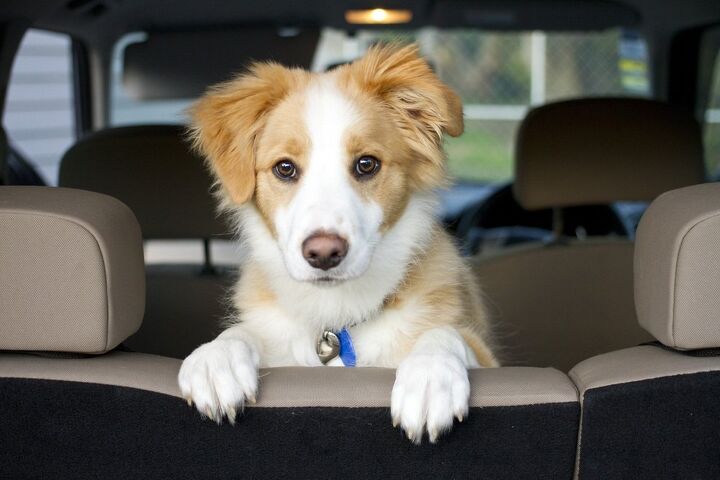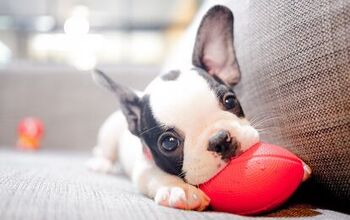Why Do Dogs Whine and Cry in the Car?

Have you ever been so excited you can hardly contain it? Well, that can often be the reason your pooch whines the moment he jumps into your back seat. He’s anticipating something great – like you taking him to run at his favorite leash-free park – and he just can’t wait for you to start the car and get moving.
Dogs communicate their mental and emotional states through many means and whining is one of them. But, unlike whining at home where it can be down to a number of stimuli such as wanting another treat, to be let out for a wee, or to communicate that he’s bored or in pain, whining in the car can typically be narrowed down to just two causes – excitement or anxiety.
Related: 6 Easy Ways To Pet Proof Your Car
While those impatient, high-pitched whines are often down to eager excitement, its also possible that he’s starting to feel anxious and frightened. This is particularly true if his typical car ride results in a visit to the vet, groomer, kennel or just some place where he will be away from you for a period of time.
For those of us driving with a whining dog in the back seat, have you ever noticed that dogs seem to have a built-in GPS system? The closer you get to your destination the higher the pitch and more incessant the whine? Simple car rides can become an endurance test and though we know they’re physically okay, wouldn’t it be great if they would just sit back, catch a breeze and enjoy the ride?
So, what do you do to prevent your dog from having a total meltdown in your back seat? It’s not that difficult, and we’re sharing the tips:
- Desensitize his reaction. If he assumes that you’re going someplace fun (or some place bad), change it up. In other words, take him to different locations and provide him with different experiences so he doesn’t have an automatic assumption as to what he can expect. If his car rides only result in a trip to the vet, expand on this to include other, more pleasurable destinations.
- Create a fun place for him. Toss his favorite blanket and toys in the back seat to help calm him. Kongs stuffed with treats are another great distraction that can help redirect that excited energy toward something other than the back of your head.
- Tire him out. Get him out for a nice long walk beforehand so that his energy is somewhat depleted. Now, if the goal of your car ride is to a dog park for a good walk, try tossing the ball in the yard for a while to help him let off steam and feel more relaxed.
- Employ rewards-based training. Keep his favorite treats handy – front seat, pocket or car door pocket. Anything that’s out of his reach. When he whines, say “stop” or “quiet” or “no” and when he responds positively, provide him with a treat.

Sharing space with three seriously judgy Schnoodles and a feline who prefers to be left alone. #LivingMyBestLife
More by Mary Simpson























